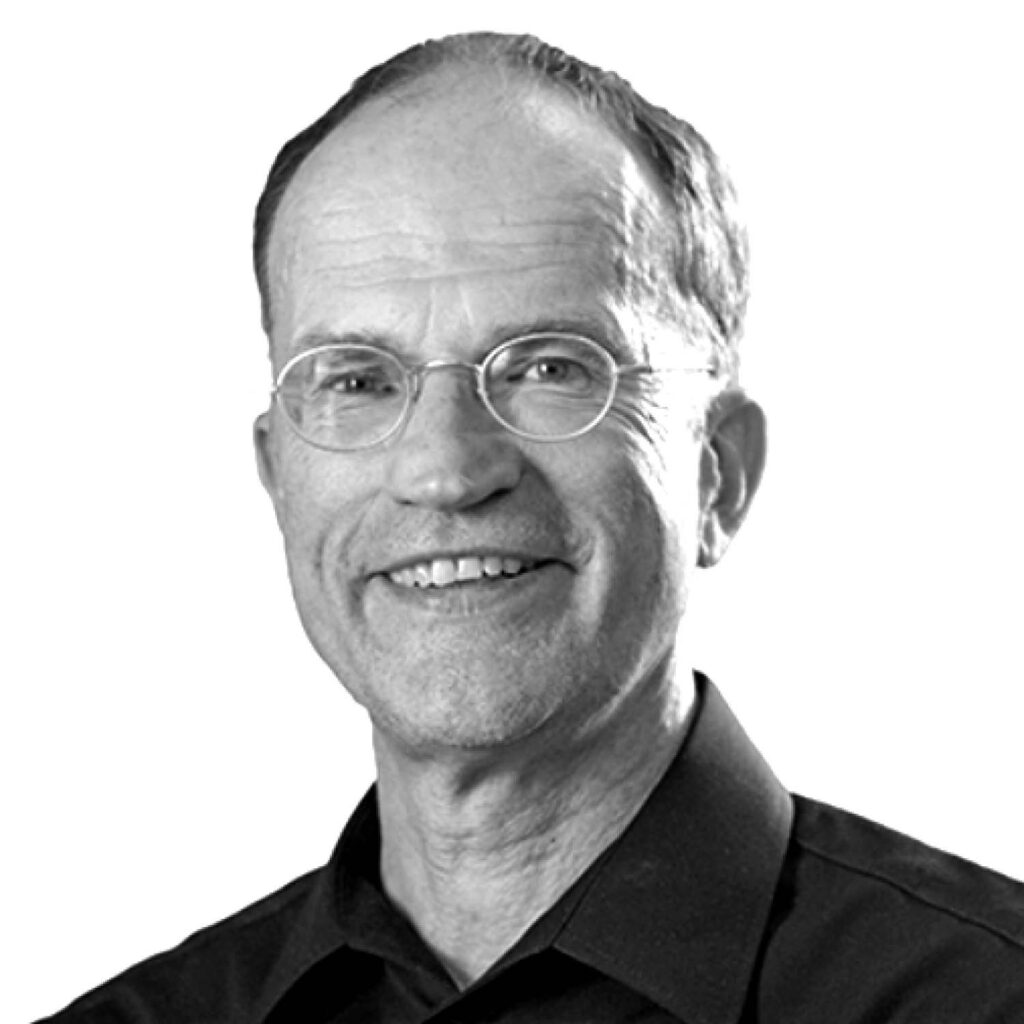The “revelations of speech” from Rudolf Steiner’s Speech and Drama course1 help us better understand our communication patterns. Dietrich von Bonin has developed these into six speech gestures that can be used as tools for an acting ‘I’.

Even infants demonstrate their interest in things in the outside world through meaningful gestures. Throughout the course of a child’s development, these gestures become increasingly differentiated within the tension field between extraverted effectiveness and introverted distancing—they call forth polar images of themselves, proving to be the archetypes of non-verbal communication. Can a pattern and order be discerned in the range of intentional emotional relationships between the child and their environment that could contribute to the understanding of communication and, ultimately, to a classification and therapy of psychological disorders?
Juxtaposed in polarities, we have six gestures from Rudolf Steiner: three world-directed, extraverted gestures (“effecting,” “seeking,” “turning towards”) and three self-directed, introverted gestures (“centering,” “throwing away,” “distancing”). Each gesture in turn also reveals a polarity in its relationship between inner and outer, which, when studied thoroughly, contributes to the understanding of psychiatric disorders and can lead to rational therapeutic approaches.2
Let us first turn to Rudolf Steiner’s original statements. He referred to these gestures as “revelations of speech” or “nuances” and described them in three manifestations: quality, gesture, and voice quality.3 The six “nuances” rarely appear in pure form in our daily interactions but, rather, are mixed together in countless variations, like the primary colors producing the colorfulness of the world when mixed in varied proportions. That being said, the balance of the mixing or one-sided dominance of one area or polarity is an important cause of interpersonal conflicts and, ultimately, psycho-pathological phenomena. The original, given sequence of gestures is not accidental. It describes a path that swings back and forth between three world- and self-directed opposites and leads from the will polarity of “effecting” and “centering” to the feeling “seeking” and “throwing away,” and ends in the mature relation to the world of “turning towards” and “distancing.”4
We recognize in everyday life when the strong dominance of one gesture presents a challenge to the opposite quality. For example, if my counterpart wants to share an observation or asks me to act, I consider whether I want to comply with the request and “center” myself first. Persistent “seeking” movements can be pushy and irritating and may trigger “throwing away” gestures. Genuine “turning towards” is only possible in a healthy alternation with “distancing.” What follows is a description of the gestures in Rudolf Steiner’s original order, along with new names given by von Bonin and his colleagues.5

Effecting and Centering
This polarity is close to the will and physical body—the feeling life is oriented to deed and body. “Effecting” here encompasses not only the meaningful gesture itself but all intentional activity from the ‘I’ to the world and the effect that perceptions have upon me. Reaching for the car keys, the blow of an axe, and intentionally going to lunch all belong in this broad category. The world affects us as an impression from the outside, and we relate to it. The remark: “Look, a great spotted woodpecker,” gets my companion’s attention, and she directs our delighted common gaze with her pointing gesture. But the environment also makes an impact and calls forth a statement from within us. The noise of a backhoe or a blinding light can have too great of an effect. To be endured, the situation must be managed; I must be able to get away from it or remove the source of disturbance. External effects that overpower us create discomfort and anxiety, even phobias.
In “centering,” I take a self-oriented position and choose to make judgments about the results of actions. Construction projects only succeed as planned if the workers look at the plans between their activities or step back from the wall they are building now and then to assess its verticality. In such cases, most people resort to a differentiated manner of holding their physical body. The point of contact allows another person to participate in my inner processes and is often unconsciously adopted by them during moments of intense synchronization. We sense: “It’s time for lunch,” and interrupt our work. People who live in a good balance between “effecting” and “centering” are healthy but not necessarily communicative; they can be effective at work and productive in everyday life and often tend to be skeptical of counseling and therapy. It’s only when the balance becomes disturbed in the long term, for example, due to excessive demands at work, that physical suffering awakens the urge to change and the willingness to consider seeking help. Thus, one danger of this polarity lies in impoverishment and routine in the soul life while, at the same time, it remains beneficial and necessary in order to realize projects and achieve success.

Seeking and Throwing Away
In the large field of “seeking” and “throwing away,” our emotions express themselves as wishes: searching, desire, anger, hatred, disgust, or ecstasy. Such feelings strongly affect their bearer, who is captured by them, in a sense. This is also where most conflicts take place. Provocation as a form of “seeking” can create “throwing away” aggression, which can lead to soul or bodily injury. This, in turn, stimulates a “seeking” in the form of despair and sympathy from those around them until the whole scene is repeated again. If people or groups of people are caught in the ping-pong of these opposing gestures, a solution can only emerge from the other two pairs of polarities. In the case of conflicts between children, parents or guardians can intervene with “effecting” interventions, followed by, in the best case, collaborative “centering,” and finally mutual “turning toward” or “distancing.”
The most frequent conflicts of this kind occur between couples. The prevalence of “seeking” and “throwing away” in relationships has two sides. “Seeking” creates the greatest openness but also easily leads to the deepest helplessness. The alternation between “seeking” desire and “throwing away” gives relationships a bright colorfulness and drama (and as such is the basis of many TV shows, films, and plays), but, at the same time, leads to ambivalence. The people involved do not understand what they really want. This polarity can be the basis for strong bonds between people, but, on the other hand (on the negative side), it can block further development. When we have a strong unconscious attachment, we can become increasingly dependent, and that can overshadow entire biographies. Our “seeking” and “throwing away” actions are directly and immediately transferred to others and cause great involvement in the nearby surroundings; they are contagious. Partisanship and mass hysteria, with all their terrible consequences, can result; they are the tragic side of the sentient soul’s learning process and can tear the ‘I’ away from its center within the six gestures of possible action. This reduction of dynamic potential is experienced as a tragedy and, to great misfortune, also takes place between whole peoples and nations, expressed as warfare to the point of exhaustion or mutual annihilation. Even on this global scale, no solution is possible within the polarity itself. On the other hand, what would human beings be without “seeking” and “throwing away”? Efficiency and immature attentiveness would dominate if we didn’t repeatedly dive into the waters of strong feelings that challenge and seize us, giving us our first opportunity to be a human being among other human beings.

Turning Towards and Distancing
This polarity is found above all in people who have achieved a certain balance in life; it has to be developed throughout one’s life and can then forms the basic attitude of what we consider to be maturity, as the fruit of sufficiently living through and transforming the other two polarities. Such people are in balance with themselves and with others. They radiate into their surroundings because they have created within themselves more than they need and can now give it away to others. In “distancing,” they are able to separate themselves from their environment without offending others. Both gestures require a high degree of self-awareness: empathetic people do not lose themselves while understanding others. “Distancing” becomes possible when one can stay aware of the limits of their own endurance. If this self-awareness is not (yet) present, “turning towards” can become a compulsion to control, and “distancing” can become continual self-reflection. Unwelcome “turning towards” creates a need for “distancing” in the other person. On the other hand, the need to turn towards or to give or to receive only arises from a certain feeling of separation, a distance.
From time to time, this polarity may occur like a kind of “premature birth,” especially in those who are more cognitively inclined. Such people tend towards constant self-reflection and shared control with their environment and others but fail to recognize the other gestures that get pushed into the unconscious. Those who know how to live with and act out of all the gestures, from out of their ‘I,’ physically and soulfully, are considered to be self-competent.

Relation to the Biography
The three main phases of adult life each appear to be dominated by one polarity as a kind of background coloring, although the others are, of course, not wholly absent. “Seeking” and “throwing away” dominate the feeling world during puberty and young adulthood. During this phase, it’s important, on the one hand, to temporarily leave our parental home, our teachers, friends, and our country in order to find our unique selves and, in this sense, we “throw them away.” On the other hand, the new is still unknown to us and triggers a powerful and perpetual “seeking”: “Who is really connected to me?” “Which profession interests me and fits into my life circumstances?” “Where shall I live?” Vacillating in this polarity becomes exhausting but is necessary for our inner development. It places particular demands upon the nervous system (via the astral body), which, only in youth, can only be endured in a healthy way and, in the end, helps us to explore and learn to assess our own physical and psychic limits.
The following phase of life, usually the longest, is characterized by our working life, creating our own family, and securing the necessities. It can only be successfully mastered when there is a clear inner focus on the polarity of will, between “effecting” and “centering.” Many people in this period typically shift the direction of their “seeking” and “throwing away” from their own personal biography to experiences in culture and the arts. In theater, films, and TV shows, people like to follow the struggles of other people from their couch and to resonate with the characters, but, in regards to themselves, they are generally glad to have this stage of life behind them for the most part. Still, every serious crisis throws us back into “seeking” and “throwing away” and renews our youthfulness; yet, for a satisfying life, we must ultimately learn to overcome this vacillation (by “effecting”) and lead ourselves on a new path to the center, to our own inner “center.”
Once the ‘I’ has wholly come into the soul, by way of its many, varied life experiences, and then has freed itself from its own needs and the demands of the outer world, a new opportunity opens up: to begin to give. At the same time, life teaches people to understand their own limits and to appropriately distance themselves in these situations. In the best cases, contentment is achieved as a characteristic of the first stage of old age, expressed in our concepts of the “wisdom of old age.”

Start to Play
When we learn to experience ourselves as moving and moved partners in communication by way of these six gestures and then learn to hear and use their projections in our voice, a rich world of possibilities for play will arise. Each gesture corresponds to a whole landscape of experience, with many characteristics, in the interplay between the person and the environment.6 All human beings use these modes of gesture and voice unconsciously in their daily interactions. We experience ourselves in situations where we are able to practice more successful and more challenging communication. When we succeed in using voice or gesture options for action beyond our spontaneous, unconscious, primary reactions, we will be able to shape our life from out of our ‘I’ with greater joy and self-competence.
Small Polarities
Each of the six gestures also unfolds within itself, acting or reacting in the tension between inner and outer, and in both cases is subject to influences from outside our ‘I’. We speak of “landscapes of experience” because each archetypal gesture encompasses a large realm of numerous feelings and inner pictures. At the edges of each landscape are areas that lie farther from the center of the individual but can encompass very effective and dramatic representations. As long as these are possible, the playing field remains wide open. When the balance is disrupted for a long period of time, we describe this as a psychological disorder or illness. The decisive factor here is the ‘I’s ability for self-control. Inner states that, in certain cases, might bring a person to need psychiatric treatment, in other cases, are considered a source of artistic inspiration; the difference is found in people with strong ‘I’ competence and psychological resilience, as demonstrated by numerous examples in the visual and performing arts. The tendency to develop psychosis and the ability to pursue a creative profession may even show corresponding genetic factors, as suggested by a large-scale research study in Iceland.7
In conclusion, one hundred years ago, Rudolf Steiner planted a seed with this aphoristic suggestion that has lived on in the hearts of many actors; today, budding forth full of new forces, it proves its effectiveness far beyond the stage and offers fruits in the field of social life and therapy.
Translation Joshua Kelberman
Illustrations Ella Lapointe 2024. Vectorized ink. (Instagram: ellapointe).
Footnotes
- Rudolf Steiner, Speech and Drama, CW 282 (Spring Valley, New York: Anthroposophic Press, 1986, repr.), lectures in Dornach on Apr. 10, 1921 and Sep. 5–23, 1924.
- Cf. Dietrich von Bonin, Esther Böttcher, Jan-Gabriel Niedermeier, Franziska Schmidt-von Nell, Therapeutische Sprachgestaltung [Therapeutic Speech Formation] (Berlin: Salumed-Verlag, 2024).
- See footnote 1, lecture from Sep. 6, 1924
- A short video on the non-verbal expression of the gestures is available as an introduction. To Login: Benutzer [User] = tsbuch; Password = ThSp23!.
- For the original designations of Rudolf Steiner, cf. footnote 2, Table 1, p. 258.
- For specific suggestions, see footnote 2.
- R. Power, S. Steinberg, G. Bjornsdottir, C. Rietveld, et al., “Polygenic Risk Scores for Schizophrenia and Bipolar Disorder Predict Creativity, Nature Neuroscience 18, no. 7 (July 2015): 953–5.









